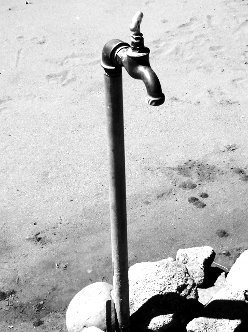Fixes flowing too slowly in WA
 Rural WA councils are sick of sub-standard water and slow efforts to fix it.
Rural WA councils are sick of sub-standard water and slow efforts to fix it.
Dozens of towns and communities in WA do not have acceptable drinking water, and it has been a major complaint for nearly two decades, especially in the Mid-west and Goldfields regions.
Reviews have identified levels of minerals and impurities in the water in 26 communities that are up to 20 times higher than the state average.
The average state-wide level of nitrate in drinking water for the last twelve months was 5.98mg per litre, but the metropolitan average is just 1.24mg per litre.
When WA’s Water Corporation was set up in 1996, the Department of Health exempted it from nitrate guidelines in 11 towns, and itself provides bottled water to the other 15 communities.
The exemption requires the Water Corporation to provide bottled drinking water at nursing outposts for children under three months of age.
Department of Health guidelines say it is unsafe for an infant under the age of three months to consume more than 50mg of nitrate per litre, or more than 100mg per litre for the older population.
The town of Cue has average nitrate levels of 50.9mg per litre and a maximum of 53.1mg per litre, while nearby Yalgoo recorded an average of 75mg of nitrate per litre and a maximum reading of 84mg per litre.
Of the 26 communities, only two have had water treatment facilities installed to help reduce the levels of nitrates and salts.
Two types of water treatment facilities have been trialled - an Electro Dialysis Reversal (EDR) unit in Wiluna and a High Efficiency Reverse Osmosis (HERO) plant in Yalgoo.
Yalgoo's HERO plant trial stopped just two years in, when authorities determined the plant had not made a significant difference.
The Water Corporation has installed an EDR facility in its place, but concedes that it too is yet to begin operating reliably.
The authorities say Cue is in line to receive some sort of treatment facility, but will not give any indication of when that – or any other expected improvements - will happen.
University of Western Australia environment engineer Professor Anas Ghadouani says there should be a lot more informaiton.
“I think it is fair that the communities should be asking these questions about whether those guidelines may need to be reviewed or whether the quality of the water that is being provided at this very moment in time in 21st century Australia should be looked at carefully,” he said.
He urged government departments to ramp up their plans for purification plants, and better inform communities.








 Print
Print